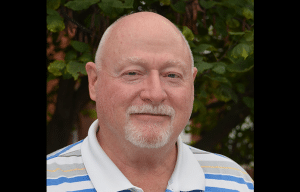The Scroobys | Mark’s Remarks

Fast forward to the early 1600s, and to the small Nottinghamshire village of Scrooby in England. The folks in that village decided the Church of England was going back to the ways of the Roman Catholic Church, and they didn’t like it. So, they decided to separate.
Now, back in those days, church and state were not separate. Therefore, these folks could get in quite a bit of trouble. In fact, when they once tried to establish their own village in another part of England, their leaders were imprisoned. The big wigs could have also had them executed if they had wanted.
So finally, the Scroobys decided to head to the Netherlands (Holland) and set up their own spot there. People in the Netherlands were more tolerant of the religious beliefs of others.
However, after around 12 years in Holland, the Scroobys found themselves working too hard (immigrants could only work at certain jobs by law) with little time to pursue their original goal: starting their own church and spreading the gospel.
The Scrooby children were growing up and becoming influenced by those Dutch folks. Now, I’m not completely sure what was wrong with the customs and ways of the Dutch, but it wasn’t good according to the Scrooby parents.
After sending some of their leaders back to England for negotiation and after securing some financial backing, the Scroobys decided they would travel the Atlantic and establish their own spot in Virginia, a new colony in the New World.
They took off in a ship called “The Speedwell” and another smaller vessel. The Speedwell leaked like a sieve. They came back to the dock a few times, once after being at sea 15 days, and finally gave up on the Speedwell (don’t you think that name is ironic?).
Off they went for the third or fourth time, this time sailing aboard the “extra ship”– a stinky old cargo ship called The Mayflower.
This ship was no cruise ship. It was built for cargo and a small crew. It stank of alcohol. There were animals aboard. People vomited all over the place. There was sickness, body odor, sailors who made fun and cussed, maggots in the food, only beer to drink, and so on. As I said, this was no Carnival Cruise.
When they finally reached land, they found that they were actually in an area of the country that would some day be called Cape Cod. It seems they were tossed off course a bit. Their original plan was to pull up somewhere at the mouth of the Hudson River near Virginia.
They went ashore in early November 1620. Apparently, regardless of the cold, those Scrooby women were tickled pink to be able to heat up the old wash tubs and wash those clothes. Can you imagine?
Most folks stayed aboard The Mayflower as various plans were made by the leaders.
Some of the men traveled around in smaller boats to scout out a place for their permanent village. They finally decided on a spot they called Plymouth. There were areas cleared for fields and plenty of fresh water. This all happened in early December. Plymouth Rock figures into the story somewhere around here, but most of the story behind this rock is myth (Yet people pay money to see it; isn’t that a hoot?).
Even though The Mayflower was not the best place for accommodations, it did provide a place to stay until proper housing could be built. Disease and malnutrition plagued the group of around 100, and half of them were dead by early spring.
Samoset, a Native American neighbor who knew broken English, greeted the Scroobys in March. At one point, he left and returned with Squanto, an adopted member of the local tribe the Wampanoag.
Squanto, who spoke English well, told the Scroobys they were living on land that once belonged to the Pawtuxet people. His people. When Squanto returned to the village after being kidnapped by sailors for a time, he found all his people had been wiped out by disease.
The Wampanoag had adopted Squanto, and so did the Scroobys. He became their chief interpreter and showed them how to make good use of land that had once been his home. With more help from Samoset and the chief of the Wampanoag people, Massasoit, the Scroobys began to thrive.
After a fantastic period of bountiful crops, good weather, and an abundance of hunting, the Scroobys decided to have a traditional English harvest festival: a common practice for many years in England when harvests were good.
They invited Massasoit and told him to bring guests. He brought 90. (I wonder if there were any Scrooby women who worried about having enough chairs).
Massasoit and his guests brought four large deer with them. There was a feast that was so large, the celebration lasted three days. Games were played, guns were fired in celebration. There was no football yet.
The Scroobys were doing a common thing: celebrating a good harvest. They weren’t necessarily calling it a “thanksgiving.” They were certainly thankful for all they had been given.
They should have been very thankful for their relationship with their native neighbors: most early settlers found relationships with natives to be tough.
Pilgrims are people who travel to other places for religious reasons. We still have pilgrims coming to our country today.
Everyone wants a happy ending. The harvests in the coming years weren’t as good. Another harvest celebration would not happen until five years later. Thanksgiving would not become a day to celebrate until the 19th century.
As for the natives? Well, as more people joined the colony and more land was cleared and taken over, the Wampanoag got angry. Eventually, the pilgrims and Wampanoag became bitter enemies.
People always want to know what was served at that first feast. Well, my research shows they had most everything you could think of that could be hunted, caught, or raised in that area of the country.
Yes, they had turkeys. They had a limited amount of vegetables. There were pumpkins, but probably not pumpkin pie.
Since potatoes weren’t mentioned in North America until the 1700s, they probably didn’t have mashed potatoes and gravy.
I wonder if the pilgrim ladies sat around after the dishes were done and looked at sales ads for Black Friday.
Eh. Probably not.





